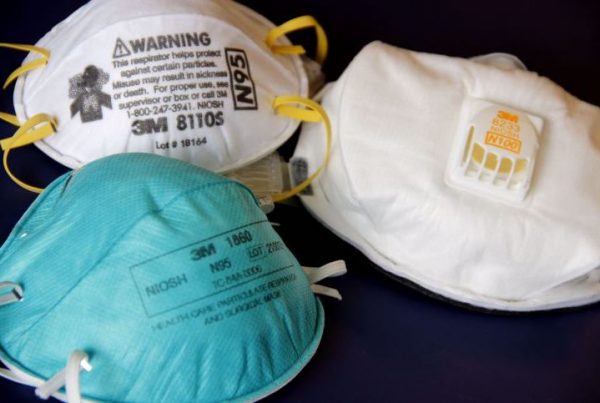By Stephanie Zeller, a science writer, artist, and researcher with Los Alamos National Labs and the Texas Advanced Computing Center based in Austin, Texas.
As COVID-19 continues to spread, eradicating every last tiny, virulent particle from your home or facility can seem an insurmountable task. No facility can be 100 percent germ-free, but taking the appropriate sanitation measures can help you protect yourself, your loved ones, and your patients by inhibiting viral transmission in enclosed spaces.
The National Institute of Health (NIH) separates proper sanitation into two categories: cleaning and disinfecting. The NIH defines cleaning as “the removal of visible dirt or particles,” or what you would normally do on a regular basis like mopping, sweeping, or dusting. Disinfecting takes cleaning a step further, using “specific measures to control, deactivate or kill infectious agents, such as viruses and bacteria.” When sanitizing your home or facility, even when no presumed sick person is present, both steps should be carried out as frequently as possible.
This overview of sanitation methods will cover how to use wipes and disinfectants to both clean and sterilize your home or facility, which surfaces to disinfect, how often to disinfect them, and CDC-recommended products to keep surfaces virus-free. We will focus here on hard, porous and nonporous surfaces.
Cleaning and Disinfecting + Products for Household & Facility Use
The CDC recommends cleaning high-touch surfaces with soap and water using a washable rag or disposable sponge/towel while wearing disposable gloves and an apron or cleaning gown. This process is best undertaken while wearing a mask in order to minimize the risk of inhaling airborne virulent particles while cleaning.
The next step is disinfecting. The CDC provides a complete, downloadable list of EPA-approved disinfectants for use against SARS-COV-2 and other viruses. Each of these products will sanitize a surface and inhibit pathogen survival, but some are recommended specifically for COVID-19:
This list is sorted by formulation type. Depending on your situation, disposable wipes and RTUs (ready-to-use products) may be preferable to dilutable products for anything other than large-scale cleaning operations. Dilutable disinfectants are typically combined with water and then applied with reusable towels, rags or mops. Studies indicate that this can lead to cross-contamination, even after these reusables are washed, so sticking to disposables for smaller, household areas is likely safer.
If you work in a facility that houses multiple individuals, especially an at-risk population, consider purchasing dilutables in bulk and using the solution to soak disposable towels. This method is not effective if the towels are not soaked for an appropriate amount of time. The NIH recommends soaking disposable towels in a solution for at least 10 minutes prior to use. Check each individual product for detailed instructions.
Some products require keeping the surface wet for a period of time (this is a case-by-case basis—check the label of your chosen product for more detailed information). Wear gloves and a mask while disinfecting and, if possible, make sure you have good ventilation. If you suspect someone is sick in your home or facility, open doors and windows to increase airflow beyond interior ventilation.
If you need a low-cost alternative you can make at home, the CDC recommends diluting disinfectant bleach (not the kind used for bleaching clothes) with water to wipe down surfaces. A recipe with more detailed instructions can be found here.
Surfaces to Regularly Disinfect
Use wipes and disinfectants to sanitize high-touch surfaces—the objects you (and other people) touch the most every day. For most people, this includes tables, doorknobs, light switches, countertops, handles, wallets and credit cards, desks, phones, keyboards, toilets, faucets, sinks, remote controls, ATM machines, and other touch-screen devices. Consult individual product manuals for electronics, but if no guidance is provided, the CDC recommends a wipe or spray disinfectant with at least 70% alcohol.
Disinfecting Frequency
If no one in your home or facility is sick, health professionals recommend cleaning your surroundings regularly and disinfecting daily. This guideline varies depending on how many people are living together and how many people leave and return to the same place. If surfaces are touched by many people considerably often, disinfection should occur much more regularly, particularly if these individuals are high-risk.
If someone in your home or facility has tested positive for COVID-19, the CDC recommends isolating that person in one room and thoroughly disinfecting everything that person has touched with disposable sanitizers.
For more information on shared living facilities, see the CDC’s guidelines for colleges and universities.




